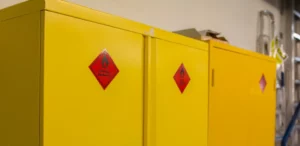In answering this question, I should probably admit that I am going to show some bias. I have a strong and passionate approach to delivering Regulation 4.5 training, and a firm belief that, if done correctly, can be extremely impactful and effective. I have often been asked to explain the difference between the two, and this post will go some way to explaining my thoughts on the matter.
Having worked in both academia using NZQA unit standards and in various industries throughout my tenure, particularly the hazardous substances training space, I feel that I have a pretty good understanding and and an appreciation of how both can work. However, I remain convinced that Regulation 4.5 surpasses unit standards by a significant margin. Because of my strong interest in experiential learning and its effectiveness, of which I am a great advocate for, I will probably always have a more biased view in favour of how Regulation 4.5 refers to training.
For those that are unaware of what is exactly experiential learning is, a definition can be found here.
My first point in comparing Reg 4.5 with Unit standards, is that under the unit standards and their course outlines you are restricted in what you can deliver. In fact the learning outcome determines the content. That in itself is restrictive, and it fails to take into account learner capability. 4.5 specifically does not have a pass/fail (achieve / not achieve) outcome to it for this reason. Of course the down side to that is that without any standard being applied there can be inconsistency and huge variations in the material being delivered, and y default obvious inconsistencies to the training. In other words the quality varies greatly. The net result is this can also encourage a tick box approach from some employers, who are looking for a quick solution to the adherence of the regulations rather that a quality, effective, and engaging course. The effectiveness of the training relies greatly on those attending, engaging in the learning process.
4.5 has the advantage of however of being more flexible, with targeted substances being trained or particular scenarios being used in the training. Our course outlines indicate that we take a more holistic approach to the training, making the training both applicable and relevant to a range of different environments, ranging from industry, transport and even the home.
The Unit Standards (31290,31292 and 31293) were developed in 2018 and are based on a range of regulations including HSNO, HSWA 2015, and General Workplace Risk and Management, to name but a few. My argument here is that with the unit standard only being worth about 2 credits, can the unit standard really do itself justice to the mountain or regulations it is referring to.
Importantly, WORKSAFE has recently issued, and will continue to do so, performance standards since the regulations came into existence. These performance standards seek to or enforce requirements as they are laid out in the regs or to clarify any interpretations. Nearly all of these unit standards have come out well after the unit standards were written. A classic example would be the latest changes around the standard that site plans must be drawn to. Don’t get me wrong, I feel that there is place for unit standards, but when it comes to these particular unit standards and there relevance to the current direction that industry is going, they fail to capture or even include some very important, and, what I would consider essential information. The are certainly not capable of capturing the changes as they occur.
The unit standards are due to be renewed, but are unlikely to any time shortly. With a move from industry to micro credentials as a better way to meet the gaps in the current training market I am unsure of the value in changing it anyway. Micro credentials will allow for much more employer/company input with business being able to develop their own training standards.
When you do a comparison of the unit standards, with the regulation 4.5 outline that we use, it easy to quickly identify a range of reasons why I consider that the unit standard fails in its attempt to properly cover the necessary information.
In a nut shell, the following is what I have observed between the two…
No mention of workers obligations-
No mention of both classification systems, with the only reference in 31290 referring to HSNO, no mention of GHS7 or the current requirements around updated SDS;s and group standards under the EPA
No detail on ERPs and FENZ requirements
No mention on training around PPE, or NZ standards for PPE , no respirator training.
No detail on specific risks with individual classes-particular in relation to 6 & 8s
No mention of requirements around Certified Handlers – legal requirement
No mention of regulation 4.5 training, or its requirements under the legislation
No mention of competent person training
No mention of spill training, and correct processes to clean up a spill
No mention of correct use of products for spill training,
No mention of WorkSafe, fines, and PCBUs obligations
No transport training around tools of trade- not necessarily included in reg 4.5 but relevant for many people .
3193 relates only to the interpretation of a SDS, nothing else.
Some Compliance Certifiers may not accept unit standards as appropriate training because of what I have outlined above. However, the addition of a company’s standard operating procedures to fill the gaps may in fact resolve some of these issues.
However the fact remains that as New Zealand’s death toll form work related exposure remains stubbornly high, we have some way to go before anyone can assume that only one form or type of training is effective. We will just have to continue to work with what we have, whether that be Regulation 4.5 or Unit Standards.

